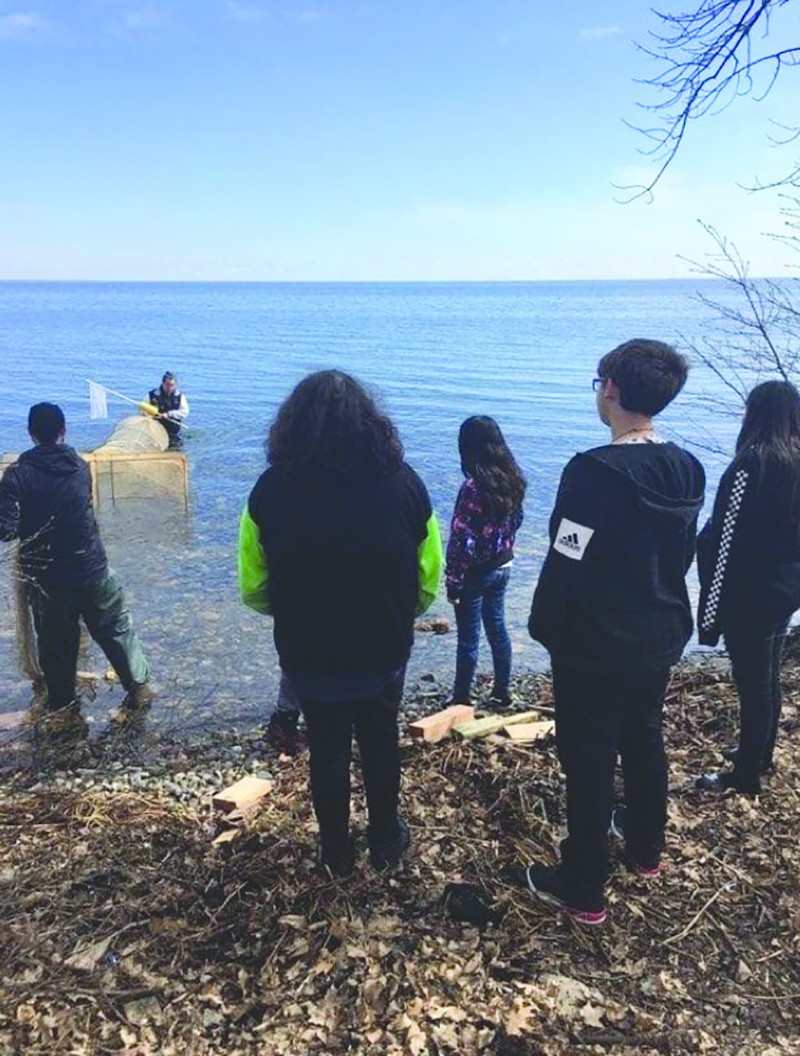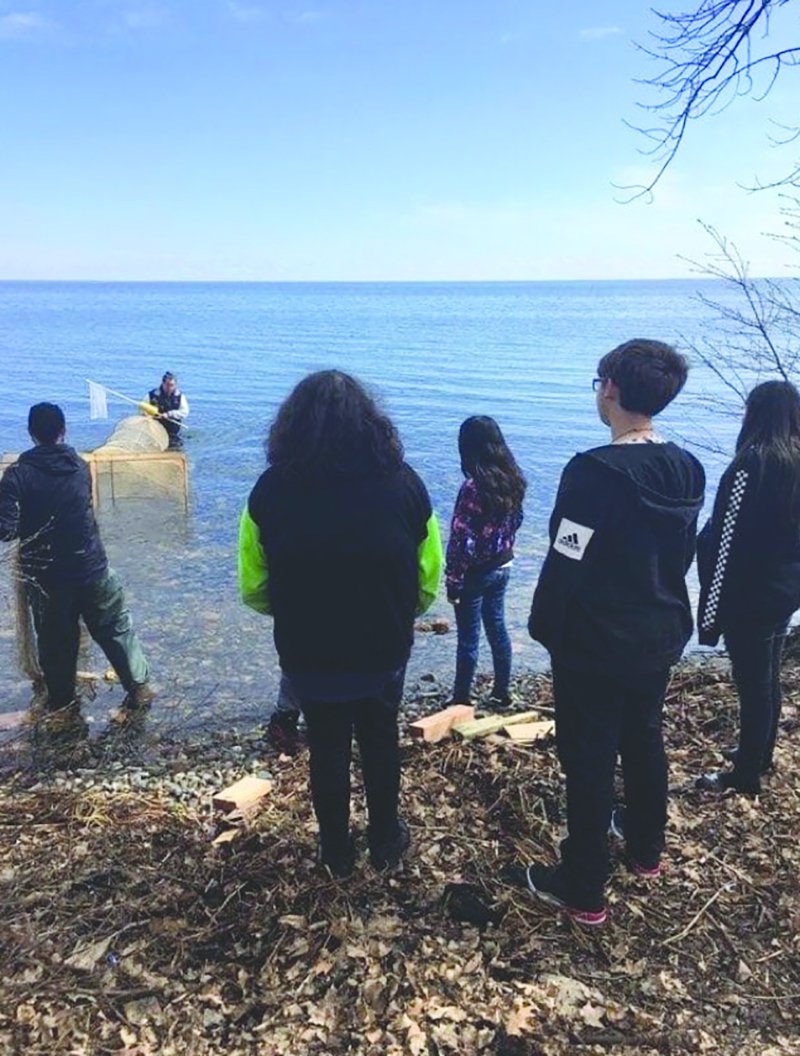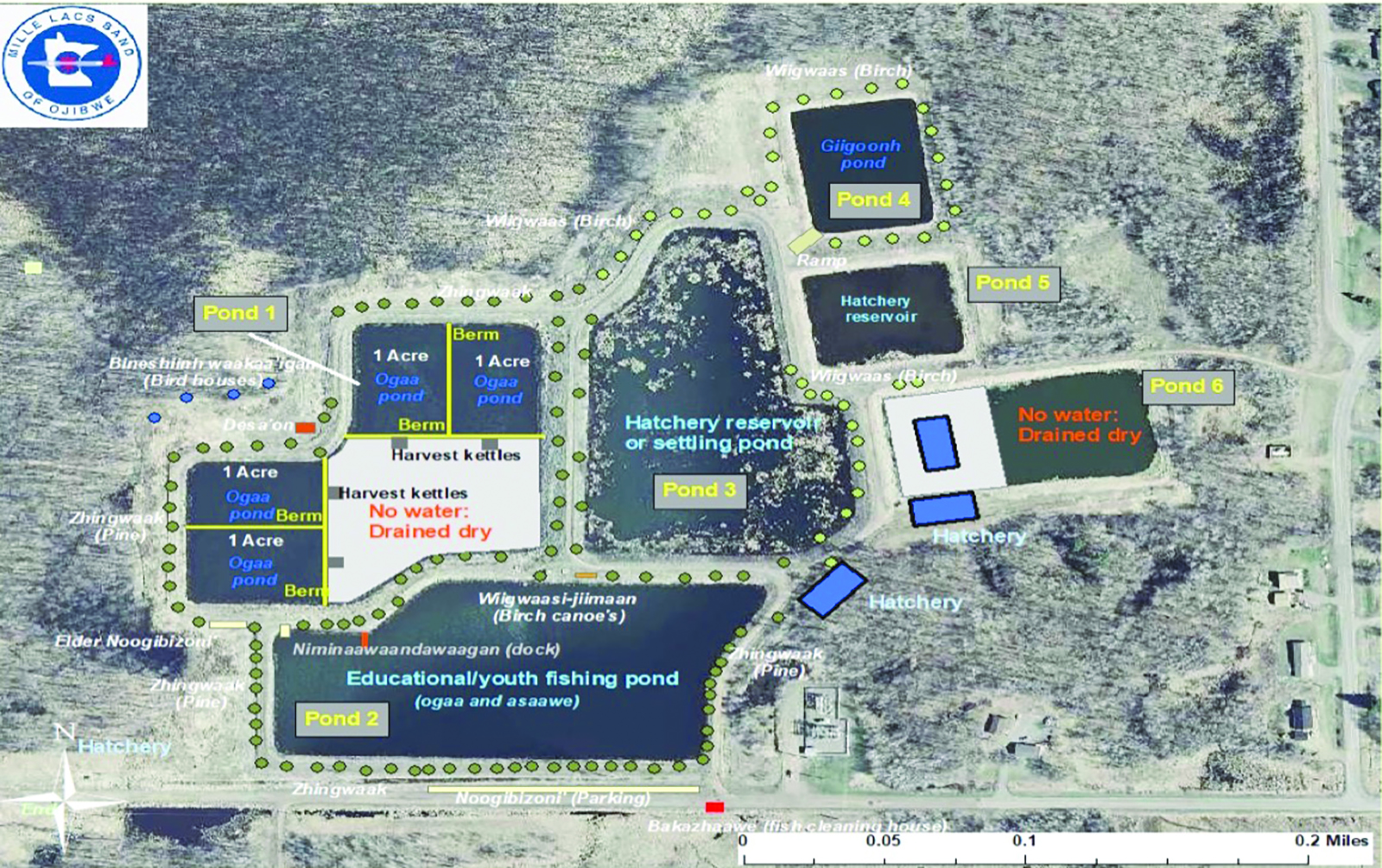
From humble beginnings in 2015, the Mille Lacs Band’s ogaa (walleye) stocking program has grown from small fry to keeper size — and anglers from all over central Minnesota are netting the benefits.
In January, the Minnesota Department of Natural Resources gave a shout-out to Mille Lacs and White Earth Bands’ fisheries programs in a news release about the state’s stocking efforts. The Band works cooperatively with the State to release fry into lakes that the State lacks resources to stock — lakes like Sullivan in Morrison County and Ann in Kanabec County.
According to Katie Draper, the Band’s Commissioner of Natural Resources, the tribe’s hatchery has come a long way while costing relatively little to establish and maintain.
"We’re in the process of building a really effective hatchery to help protect both the ogaa and our cultural traditions, and it’s costing Band members very little," said Katie. "Miigwech to our former Commissioner, Susan Klapel, for supporting the program in its early stages, and to our biologists for getting it started and keeping it going."
Susan’s work was prompted by a Joint Resolution from the Band Assembly and Chief Executive, who saw the need for the hatchery as surveys of the Mille Lacs ogaa population showed a troubling decline in the species.
Beginning in the spring of 2016, a team of biologists and technicians with help from Band member spearers, harvested walleye eggs and milt from speared fish, mixed them together, incubated them, and hatched them in a District I building.
From there, they were transferred to rearing ponds that were formerly part of the old wastewater treatment facility.
The original team of Fisheries Biologist Carl Klimah and Aquatic Biologist Chad Weiss has expanded to include Keith Wiggins, a Band member who was recruited from Oregon, where he had experience at some of the nation’s top fish hatcheries. Commissioner Draper and Director of Resource Management Kelly Applegate oversee the program.
The original hatchery was built with donated equipment at a cost of about $10,000. The first year, a million fry were produced, a total which has grown to 6.4 million fry, which have been stocked in area lakes and the Band’s rearing ponds.
Namachers Lake in District III, which was devoid of walleyes, now has a healthy population, and other lakes are in line for restoration as well. Namachers will not just be a recreational fishing lake but will also be a storehouse for the unique Mille Lacs strain of walleyes, in case climate change or other factors continue to affect the Mille Lacs walleye population.
Some of the ogaa fry — along with yellow perch — are raised into fingerlings in the rearing ponds, which will provide tribal youth and Elders educational and harvest opportunities. These fish are now ready to be harvested by tribal members, and a mini-aquatic ecosystem has been created.
In 2020, the hatchery also successfully reared over 100,000 fathead and sucker minnows that were used to feed fingerling walleye as well as to increase forage bases in reservation lakes. Despite setbacks in 2020 due to COVID-19, the program still managed to hatch and stock around 1 million walleye fry into a local lake and pond. "
”When fingerlings are desired, we stock our walleye fry into our fish ponds and raise them to a size between 3 and 6 inches," said Carl. "We then stock them into lakes within and outside the 1837 Ceded Territory. In total, over 71,681 walleye fingerlings have been stocked, which provided key support for recreational and subsistence fisheries. Walleye fingerlings are currently being produced to maintain tribal lake walleye populations. In addition, the walleye fingerlings are also being used to restore walleye populations in smaller tribal lakes that no longer have walleye in them."
Above: Mille Lacs Band Member Cameron Weous shows Nay-Ah-Shing students how to pull a fyke net to collect ogaa.
Below: Mille Lacs Band Member Charlie Sam shows a Nay-Ah-Shing student how to mix ogaa eggs and milt together to fertilize them. "You are making life," said one of the Ojibwe teachers.
Bottom: The Band's decommissioned wastewater treatment ponds in District I are being redeveloped into rearing ponds and youth/Elder fishing ponds. The map shows future plans for the site.

